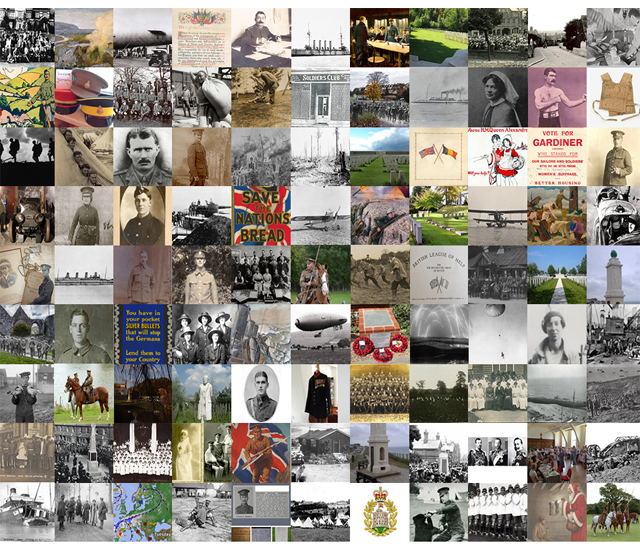On 4 August 1914 Britain declared war on Germany. One hundred years later to mark that occasion the East Sussex First World War Project was launched. We now look back on the first year of the project.
The website for the East Sussex First World War Project was launched at 11am on 4th August 2014. However, the team behind the project had been hard at work for months beforehand. The website was launched with an initial seventeen stories written by both project staff and also local museums and historians. Since that point the website has rapidly grown.
The primary purpose of the East Sussex First World War Project was to provide a space for the residents of East Sussex to pass on their stories about how the war affected the county, and we are all immensely proud of how we have achieved this goal. The website has hosted over one hundred and thirty different stories and events highlighting the First World War and its impact on East Sussex. Two-thirds of these have been contributed by members of the public, local museums, and historians. Since the day it went live, pages on the website have been viewed sixty thousand times by people on every continent except Antarctica.
We have continued to explore new and exciting ways of exploring the First World War in East Sussex. In collaboration with the local photographer Kieron Pelling, we continue to showcase amazing ‘Then and Now‘ photographs that compare images of East Sussex during the war to how those locations appear today.
Our sister project Recording Remembrance continues to map and document every single war memorial in East Sussex.
We have undertaken the mass digitisation of four East Sussex Newspapers which we will release online every month, in semi-real time, so that you can watch the war play out in the local press just as residents of the country did one hundred years ago. No project of our size has ever completed such an ambitious newspaper digitisation process. Further newspaper titles are also being digitised at the moment and will be added into the historical records here in the future.
Selected stories that appear on our website are also being converted into educational resources for local schools. Therefore ensuring that schoolchildren will be able to study and learn about the war through the experiences of those who lived here during it.
The East Sussex First World War Project will continue for the duration of the centenary. All of the stories and images, the newspapers and memories that have been displayed on this website will eventually be archived in The Keep and will exist forever as historical archival records.
We would like to thank everyone who has contributed stories and events to the project, and everyone who has viewed and enjoyed the website. If you have stories about the county during the First World War, or any upcoming events then please submit them to us.
Thank you very much indeed and, whilst we look forward to the next year and the next one hundred stories, we would like to look back at some of our team’s favourite stories and material.
Chris Kempshall – Project Officer for First World War Commemorations
My favourite story is probably the one documenting the East Sussex men who were Shot at Dawn. It was one of the most difficult stories to write in regards to finding the right balance of explaining why some soldiers were executed during the war but also highlighting the contentiousness of the topic today. It’s now a story that I’m incredibly proud of as it represents an acknowledgement that, as a project, we weren’t going to shy away from topics that were difficult and emotional.
Aside from that, the thing I am probably most proud of is the collection of digitised newspapers. It was about eight months in the making, but I am delighted at the results and the fact that the project has created such a wonderful new digital resource.
Indea Cadman-Rivers – Policy Development Officer
East Sussex Munitionettes is my favourite story to date since it shows the resilience of women in the war, with them producing approximately 80% of the weaponry and ammunition used by the British Army by June 1917.
It highlights the long-standing political issue of the gendered wage gap, but also tells of the incredible efforts of women working in hazardous conditions. It was also through the Munitionettes’ Cup that women’s football teams became increasingly popular. Women made a tremendous contribution to the war, and the Munitionettes are a true testament to this.
Lee Banner – Policy Officer
I would say my favourite stories are the ones about the many communities who contributed so much to the war effort but who don’t always feature in the main narrative of the First World War. Picking out just a couple, the stories about the Gypsy Traveller, Chinese and West Indian communities really struck a chord with me.
Madeleine Whitty – Senior Graphic Designer
For me, I think it has to be Feathered Warriors. Not only was the story’s image the face of our campaign to promote the website, personally I think this story is so striking. It’s a powerful reminder that the war effected absolutely everything and in this case, even the pigeons had a part to play.








